The Leibniz-IZW is an internationally renowned German research institute. It is part of the Forschungsverbund Berlin e.V. and a member of the Leibniz Association. Our goal is to understand the adaptability of wildlife in the context of global change and to contribute to the enhancement of the survival of viable wildlife populations. For this purpose, we investigate the diversity of life histories, the mechanisms of evolutionary adaptations and their limits, including diseases, as well as the interrelations of wildlife with their environment and people. We use expertise from biology and veterinary medicine in an interdisciplinary approach to conduct fundamental and applied research – from the molecular to the landscape level – in close dialogue with the public and stakeholders. Additionally, we are committed to unique and high-quality services for the scientific community.
+++ Current information on African swine fever: The Leibniz-IZW conducts research on the population dynamics, on models of disease outbreaks in wild boars and on the ecology and human-wildlife interaction in urban areas. African swine fever is a reportable disease in domestic swine and therefor is the purview of the respective federal state laboratories and the Friedrich-Loeffler-Institut (Federal Research Institute for Animal Health) FLI. +++
News
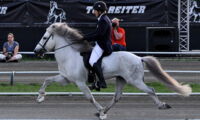
How the Vikings started the worldwide distribution of gaited horses
Some horses have special gaits, which are more comfortable for the rider than walk, trot or gallop. Now, a study by an international research team under the direction of the Leibniz Institute for Zoo and Wildlife Research (IZW) in Berlin revealed that these gaited horses most likely originated in the 9th century medieval England. From there they were brought to Iceland by the Vikings and later spread all over Europe and Asia. These findings were published in the current issue of the journal “Current Biology”.
Read more … How the Vikings started the worldwide distribution of gaited horses
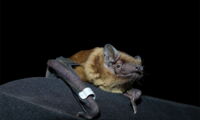
Dangerous flight into the wind farm
Wind turbines attract bats. They seem to appear particularly appealing to female noctule bats in early summer. In a pilot study, researchers of the German Leibniz Institute for Zoo and Wildlife Research in Berlin noticed this when they tracked the flight paths of noctule bats, Nyctalus noctula, using the latest GPS tracking devices . The bats managed to take even seasoned experts by surprise.
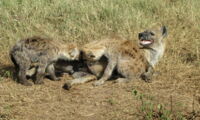
Maternal social status and sibling rivalry shape milk transfer in spotted hyenas
Females of low social status often have limited access to food resources. As a result, their offspring are nursed infrequently and may experience long fasting periods that can seriously compromise their growth and survival. In particular when they have to share their milk intake with a littermate, milk shortage can be very detrimental. Yet researchers from the Leibniz Institute for Zoo and Wildlife Research (IZW) and the former Max Planck Institute for Behavioral Physiology in Germany found that low-ranking spotted hyenas were able to compensate to some extent for their low nursing frequency. This they do by transferring more milk of superior nutritional quality to their offspring than high-ranking mothers during nursing bouts. The results also reveal that the socially dominant offspring in twin litters efficiently uses aggression against its subordinate littermate to skew milk transfer in its favour. The study has been published in the scientific journal “Behavioural Ecology”.
Read more … Maternal social status and sibling rivalry shape milk transfer in spotted hyenas
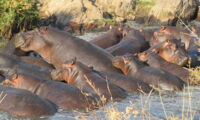
Hippos in search of the last suitable water pools
Hippos in the Great Ruaha River in Tanzania face a profound loss of their habitat during the dry season. The river has much less water during this season than in previous decades because it is increasingly extracted for human use. As a consequence, the river dries up. Researchers from the German Leibniz Institute for Zoo and Wildlife Research (IZW) have now examined how this affects the distribution of hippos. Their results reveal extensive and long distance movements, as hippos search for vital daytime resting sites. The study has been published in the scientific journal “PLOS ONE”.
Read more … Hippos in search of the last suitable water pools
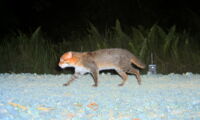
Roadmap for better protection of Borneo’s cats and small carnivores
Habitat conversion and fragmentation, logging, illegal hunting, fires: The rainforests and wildlife on Borneo, the third largest island in the world, are highly threatened. Now, an international research team under the leadership of the German Leibniz Institute for Zoo and Wildlife Research (IZW) and the International Union for Conservation of Nature and Natural Resources (IUCN) Species Survival Commission, has published a roadmap for more targeted conservation efforts for Bornean cats and small carnivores in a special supplement of the Raffles Bulletin of Zoology.
Read more … Roadmap for better protection of Borneo’s cats and small carnivores
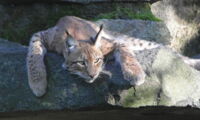
Reintroduction of lynx requires larger numbers to avoid genetic depletion
For successful reintroduction of lynx into the wild, the number of released animals is crucial. If only a few lynx are reintroduced to found a population, the genetic diversity is too low to ensure their long-term sustainability. An international research team has recently published these findings in the scientific journal “Conservation Genetics”. The researchers highlight the need to strengthen newly established European lynx populations by additional translocations of lynx as well as other conservation measures.
Read more … Reintroduction of lynx requires larger numbers to avoid genetic depletion
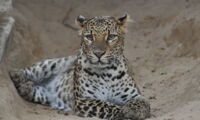
The evolution of the Javan leopard and the urgent need for its conservation
An international team of researchers from Germany and Indonesia has discovered new insights into the evolutionary history of the Javan leopard. The results of the study confirm that Javan leopards are clearly distinct from Asian leopards and probably colonised Java around 600,000 years ago via a land bridge from mainland Asia. The study, published in the scientific journal “Journal of Zoology”, highlights the urgent need for concerted conservation efforts to preserve the Javan leopard from extinction.
Read more … The evolution of the Javan leopard and the urgent need for its conservation
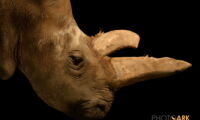
Seeking to Rewind Mammalian Extinction – The Effort to Save the Northern White Rhino
In December 2015 an international group of scientists convened in Austria to discuss the imminent extinction of the northern white rhinoceros and the possibility of bringing the species back from brink of extinction. The discussions of this historic meeting appear in the international Journal Zoo Biology. The publication of this work is designed as part of the ongoing effort to raise awareness for the extinction crisis facing rhinos and many other species while also reaching out to the scientific community to share and gather information.
Read more … Seeking to Rewind Mammalian Extinction – The Effort to Save the Northern White Rhino




